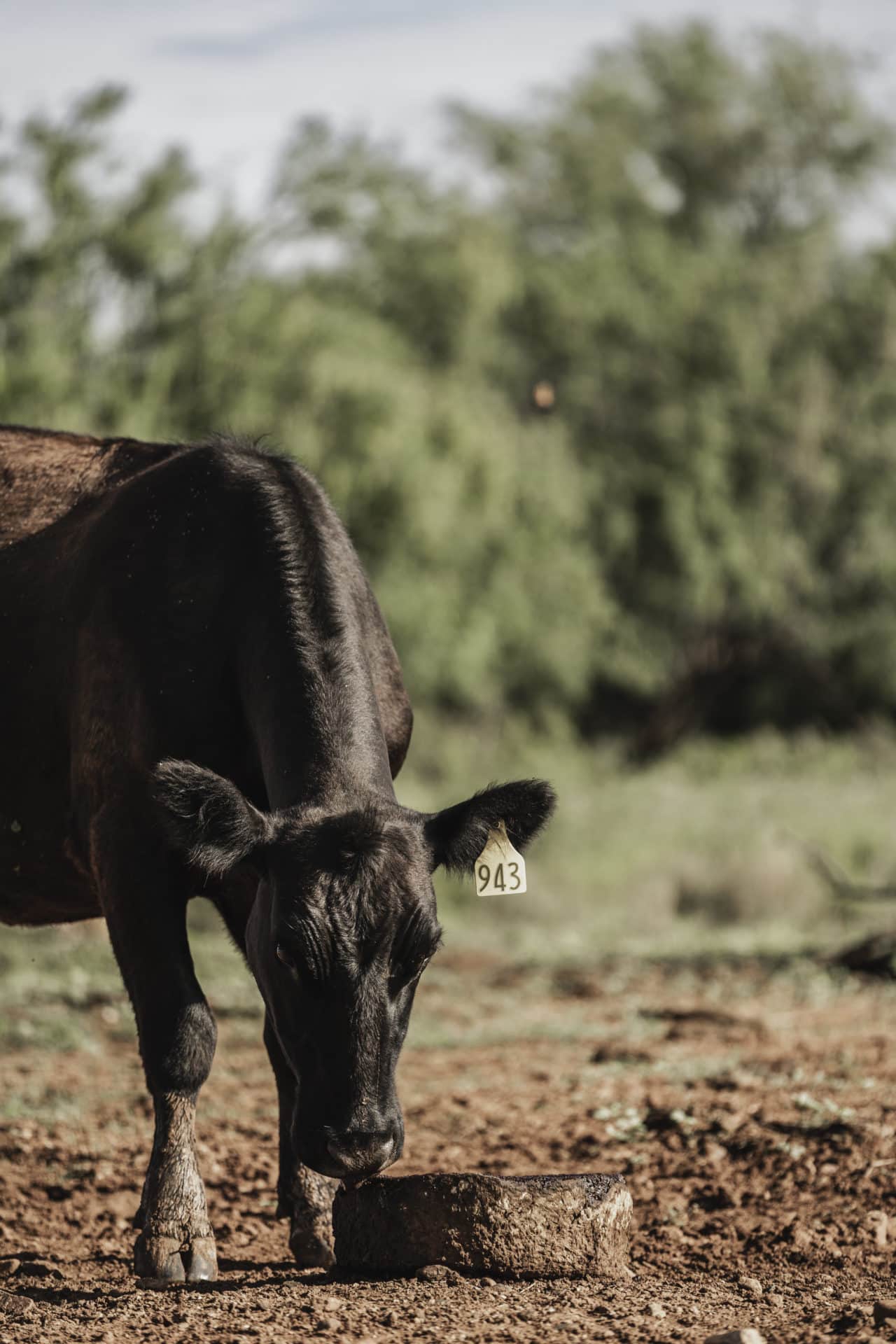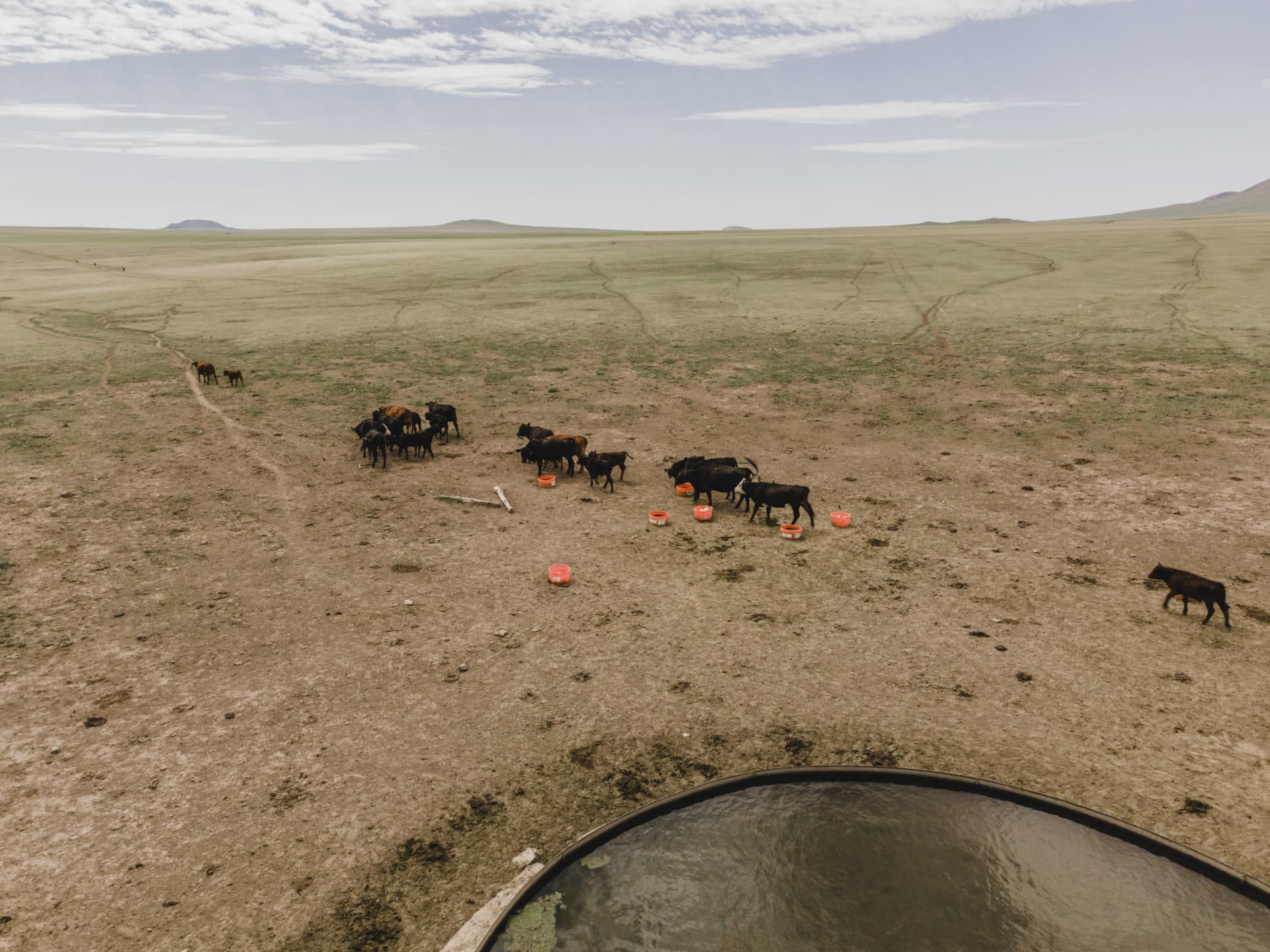Last updated on October 25th, 2023 at 02:26 pm
Take advantage of indirect supplementation technology to help your cows better utilize low-quality feed.
Protein supplementation. Beyond a good mineral program, it’s one of the most important supplementation strategies you can do to keep your cow herd in top shape.
But did you know there are two kinds of protein supplementation? There’s direct-fed protein and then there’s indirect supplementation technology (IST). Both are important but they are different.
Direct-fed protein is the most common way to provide supplemental protein to cattle. Whether it’s a lick tub or cubes, however, the product contains a specific amount of protein. So, for example, if a cow consumes 1 pound of 20% protein supplement daily, that’s all the extra protein she gets. That’s not necessarily bad, but you can do better.
That’s where IST comes into play.

Indirect Supplementation Technology
Rather than providing a specific amount of protein, the Nutrizorb® components found in every Riomax® tub (enzymes, probiotics, prebiotics and fungi) allow cattle to pull more protein and other nutrients out of the forge they consume. That happens by stimulating the microbes in the rumen to do a better job of digestion.
Not only does the Nutrizorb® power pack stimulate the existing rumen microbes to do a better job, it also stimulates them to reproduce at a higher rate. So there are more microbes doing a better job.

Dealing with Drought
That’s important any time, but it’s especially critical now. “With the drought conditions that we’re facing, a lot of guys are looking to utilize lower quality forages like corn stalks or straw or poor-quality hay, says Trevor Greenfield, founder and co-owner of Rio Nutrition. “The Riomax® IST indirect supplementation technology enables you to do that, to utilize those poorer quality forages.”
That’s what Matt Thompson found. He’s a fourth-generation rancher in eastern Idaho, running 400 mama cows, plus replacements and bulls, on a commercial cow-calf outfit that his ancestors started in 1910.
“I’ve known about Rio for five or six years, probably, but I never could get myself to pull the trigger because of the upfront cost.” Drought cut his hay production and with high feed costs and reduced feed availability, he decided it was time to give the product a try.
Reducing Feed Costs
“It actually saved me enough hay to pay for the tubs.” Matt typically feeds around 30 pounds of hay per cow in the winter. “I’m down to 20-22 pounds. And the cattle held up well and looked good,” he says, going into calving time.

“I know it saved me 150 tons of hay over the winter that I didn’t have to put out, plus the time and wear and tear on equipment, the cost of diesel, all that stuff,” he says. “It saved me time, effort and expense.” Beyond saving on hay, he didn’t have to buy and put out additional mineral. “I’m way farther ahead to have the cattle on Rio—better breed-up and the cows are milking better.”
Cattle Protein - Nature's Way
Then there’s this: the microbes themselves are an important protein source. As the microbes repopulate and die off, they are digested along with the forages the cattle consume, giving an extra kick to the protein needs of cattle.
“That’s IST working with Mother Nature to run more lean and mean, to run more efficiently, and especially during the drought, so we can get by on lower quality, lower cost forages,” Greenfield says.


